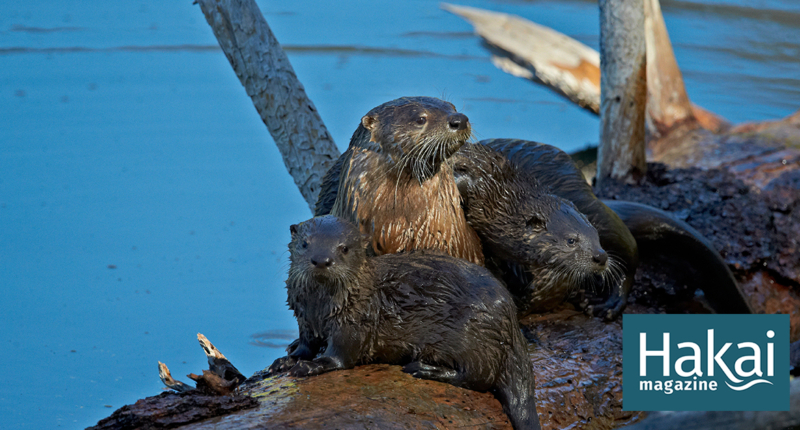Otters have become indicators of ecosystem health due to their resilience in contaminated waterways. However, their presence does not necessarily indicate a healthy environment. Otters from the Green-Duwamish in Washington state have some of the highest concentrations of PCBs and PAHs ever recorded in wild river otters. Despite this, the otters’ population is not dwindling, and they are not manifesting any physically obvious symptoms. Otters have been used as biomonitors of environmental contamination in the past, and biologist Michelle Wainstein hopes to use the Green-Duwamish River otters as biomonitors of the Superfund cleanup over the next decade. The otters’ localized bathroom habits, mixed diet, and persistence in the face of pollution make them useful indicators of environmental contamination.
The Return of River Otters Does Not Indicate the Healing of Nature
River otters are not like the canary in a coal mine, whose death signaled the danger of toxic gases. Otters are, in fact, living in one of the most contaminated areas along the Green-Duwamish river in Washington state. Michelle Wainstein, a biologist, collected otter fecal matter from a dozen sites along the river and compared the contaminant concentrations in the poop between industrial and rural zones. Her findings showed that otter poop in the lower Duwamish had 26 times more polychlorinated biphenyls (PCBs) and 10 times more polycyclic aromatic hydrocarbons (PAHs) than their counterparts in cleaner water upstream. Both PCBs and PAHs are carcinogenic to humans and can disrupt hormonal and neurological processes and affect reproduction in mammals.
The Green-Duwamish river is a 150-kilometer-long waterway that emerges from the Cascade Range and empties into Puget Sound. The last 8 kilometers of the river, known as the lower Duwamish, was declared a Superfund site by the US Environmental Protection Agency in 2001. This is due to the pollution caused by Seattle’s aviation and manufacturing industries that dumped waste chemicals like PCBs and PAHs into the water for a century.
Despite the pollution, river otters are thriving along the waterway, including the most contaminated areas near the river’s mouth. However, the high levels of contamination discovered in otter poop by Wainstein challenge the idea that the return of otters to the once-degraded landscape indicates nature’s healing. In fact, it shows that the legacy of toxic waste remains and poses a threat to the health of wildlife and humans.
Environmental historian Ruizhi Choo notes that the reappearance of smooth-coated otters in Singapore’s canals and reservoirs is celebrated as a sign of nature’s return. This fits into the narrative that government agencies want to project of nature’s resurgence and a city in nature. However, the reality is more complex, and the return of otters does not necessarily mean that the environment has healed. Otters are a reminder of the enduring legacy of toxic waste, and their health is an indicator of the continuing threats posed by pollution.
The Role of Otters in Environmental Health Monitoring
Otters are known to be indicators of ecosystem health. Conservationist Joe Gaydos believes that the Eurasian otter’s resurgence in Europe following successful river cleanup campaigns has helped form the mental link between otters and ecosystem health. However, as biologist Michelle Wainstein’s study suggests, the presence of otters does not necessarily mean that the environment is healthy. Otters from the lower Duwamish in Washington state have some of the highest concentrations of polychlorinated biphenyls (PCBs) and polycyclic aromatic hydrocarbons (PAHs) ever recorded in wild river otters. Previous research has found a correlation between PCB exposure and health risks in wild river otters, including increased bone pathologies, reproductive and immunological disorders, organ abnormalities, and hormonal changes.
Despite the contamination, the otters’ population is not dwindling, and they are not manifesting any physically obvious symptoms. However, their ability to bear a heavy contaminant burden suggests that a population resurgence alone may not reflect the quality of an environment. Otters have become as toxic as the environments they inhabit.
Otters have been used before as biomonitors of environmental contamination. Following the 1989 Exxon Valdez oil spill, otters lingered in oil-drenched waterways, allowing scientists to track the effectiveness of the oil cleanup. Scientists in Illinois also discovered dieldrin in otter organ tissue, even though the insecticide had already been largely banned for 30 years. These cases demonstrate the creatures’ resilience in contaminated waterways, making them useful for long-term pollution data collection.
Wainstein wants to use the Green-Duwamish River otters as biomonitors of the Superfund cleanup over the next decade. Otters are useful indicators of environmental contamination due to their localized bathroom habits, mixed diet of fish, crustaceans, and mammals, and persistence in the face of pollution.
Watching the workers dismantle a portion of the river’s levied banks to make channels for salmon, Wainstein thinks about the other animals that were driven out by industrial contamination. She wonders if the otters’ ability to bear the contaminant burden means that they will be the only animals in the river for a long time. However, she hopes that one day, seabirds, shorebirds, and small mammals, like beaver and mink, will return to the river.
Wainstein is unsure of how long it will take for the cleanup efforts to take effect. However, she believes that the otters might hold the answer.
Don’t miss interesting posts on Famousbio










